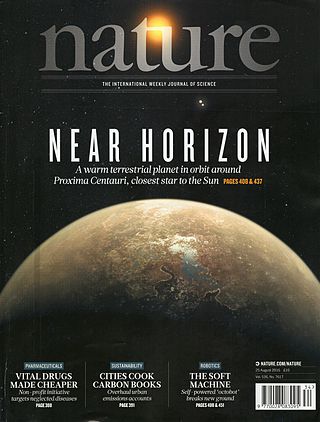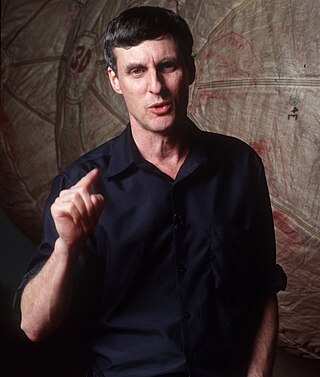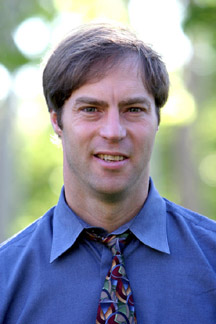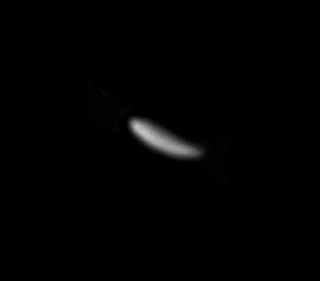Related Research Articles

Carl Edward Sagan was an American astronomer, planetary scientist, cosmologist, astrophysicist, astrobiologist, science communicator, author, and professor. His best known scientific contribution is his research on the possibility of extraterrestrial life, including experimental demonstration of the production of amino acids from basic chemicals by radiation. He assembled the first physical messages sent into space, the Pioneer plaque and the Voyager Golden Record, which were universal messages that could potentially be understood by any extraterrestrial intelligence that might find them. He argued in favor of the hypothesis, which has since been accepted, that the high surface temperatures of Venus are the result of the greenhouse effect.

Scientific American, informally abbreviated SciAm or sometimes SA, is an American popular science magazine. Many famous scientists, including Albert Einstein and Nikola Tesla, have contributed articles to it. In print since 1845, it is the oldest continuously published magazine in the United States. Scientific American is owned by Springer Nature, which in turn is a subsidiary of Holtzbrinck Publishing Group.

Nature is a British weekly scientific journal founded and based in London, England. As a multidisciplinary publication, Nature features peer-reviewed research from a variety of academic disciplines, mainly in science and technology. It has core editorial offices across the United States, continental Europe, and Asia under the international scientific publishing company Springer Nature. Nature was one of the world's most cited scientific journals by the Science Edition of the 2019 Journal Citation Reports, making it one of the world's most-read and most prestigious academic journals. As of 2012, it claimed an online readership of about three million unique readers per month.

Steven Weldon Squyres is an American geologist and planetary scientist. He was the James A. Weeks Professor of Physical Sciences at Cornell University in Ithaca, New York. His research area is in planetary sciences, with a focus on large solid bodies in the Solar System such as the terrestrial planets and the moons of the Jovian planets. Squyres was the principal investigator of the Mars Exploration Rover Mission (MER).

Stephen C. Meyer is an American author and former educator. He is an advocate of the pseudoscience of intelligent design and helped found the Center for Science and Culture (CSC) of the Discovery Institute (DI), which is the main organization behind the intelligent design movement. Before joining the DI, Meyer was a professor at Whitworth College. Meyer is a senior fellow of the DI and director of the CSC.
A scientific celebrity or celebrity scientist is a scientist who has gained significant public attention, usually through the media. For the general public, scientific celebrities serve to represent science or a field of science, usually in an unofficial capacity. In some instances, such promotion can be self-serving in nature, can be at the behest of governmental or corporate interests or to promote the science involved.

The European Geosciences Union (EGU) is a non-profit international union in the fields of Earth, planetary, and space sciences whose vision is to "realise a sustainable and just future for humanity and for the planet." The organisation has headquarters in Munich (Germany). Membership is open to individuals who are professionally engaged in or associated with these fields and related studies, including students and retired seniors.

Sol Alan Stern is an American engineer and planetary scientist. He is the principal investigator of the New Horizons mission to Pluto and the Chief Scientist at Moon Express.

Peter Goldreich is an American astrophysicist whose research focuses on celestial mechanics, planetary rings, helioseismology and neutron stars. He is the Lee DuBridge Professor of Astrophysics and Planetary Physics at California Institute of Technology. Since 2005 he has also been a professor at the Institute for Advanced Study in Princeton, New Jersey. Asteroid 3805 Goldreich is named after him.

Bret Louis Stephens is an American conservative journalist, editor, and columnist. He began working as an opinion columnist for The New York Times in April 2017 and as a senior contributor to NBC News in June 2017.

Maria T. Zuber is an American geophysicist who is the vice president for research at the Massachusetts Institute of Technology, where she also holds the position of the E. A. Griswold Professor of Geophysics in the Department of Earth, Atmospheric and Planetary Sciences. Zuber has been involved in more than half a dozen NASA planetary missions aimed at mapping the Moon, Mars, Mercury, and several asteroids. She was the principal investigator for the Gravity Recovery and Interior Laboratory (GRAIL) Mission, which was managed by NASA's Jet Propulsion Laboratory.

David H. Grinspoon is an American astrobiologist. He is Senior Scientist at the Planetary Science Institute and was the former inaugural Baruch S. Blumberg NASA/Library of Congress Chair in Astrobiology for 2012-2013.
George Musser is a contributing editor for Scientific American magazine in New York and the author of The Complete Idiot’s Guide to String Theory and of Spooky Action at a Distance.

Aegaeon, or Saturn LIII, is a natural satellite of Saturn. It is thought to be similarly smooth as Methone. It orbits between Janus and Mimas within Saturn's G Ring.

The Starmus International Festival is an international gathering focused on celebrating astronomy, space exploration, music, art, and other sciences such as biology and chemistry. It was founded by Garik Israelian, an astronomer at the Institute for Astrophysics in Tenerife, Canary Islands, Spain and Brian May of the rock band Queen.

Enceladus Life Finder (ELF) is a proposed astrobiology mission concept for a NASA spacecraft intended to assess the habitability of the internal aquatic ocean of Enceladus, which is Saturn's sixth-largest moon and seemingly similar in chemical makeup to comets. The spaceprobe would orbit Saturn and fly through Enceladus's geyser-like plumes multiple times. It would be powered by energy supplied from solar panels on the spacecraft.
Journey to Enceladus and Titan (JET) is an astrobiology mission concept to assess the habitability potential of Enceladus and Titan, moons of Saturn.

Kevin R. Grazier is an American planetary physicist, known for his work on the Cassini/Huygens Mission to Saturn and Titan where he had the dual roles of Science Planning Engineer and Investigation Scientist for the Imaging Science Subsystem instrument. He is an expert in computational methods and planetary dynamics and performs large-scale, long-term simulations of early Solar System evolution, dynamics, and chaos.

Edmund Soon-Weng Yong is a British-American science journalist. He is a staff member at The Atlantic, which he joined in 2015. In 2021, he received a Pulitzer Prize for Explanatory Reporting for a series on the COVID-19 pandemic.

Konstantin Batygin is an American astronomer and Professor of Planetary Sciences at Caltech.
References
- ↑ "Who's who at New Scientist". New Scientist. Archived from the original on 2021-01-26. Retrieved 2019-05-31.
- 1 2 "2015 Prize Recipients | Division for Planetary Sciences". dps.aas.org. Retrieved 2019-05-31.